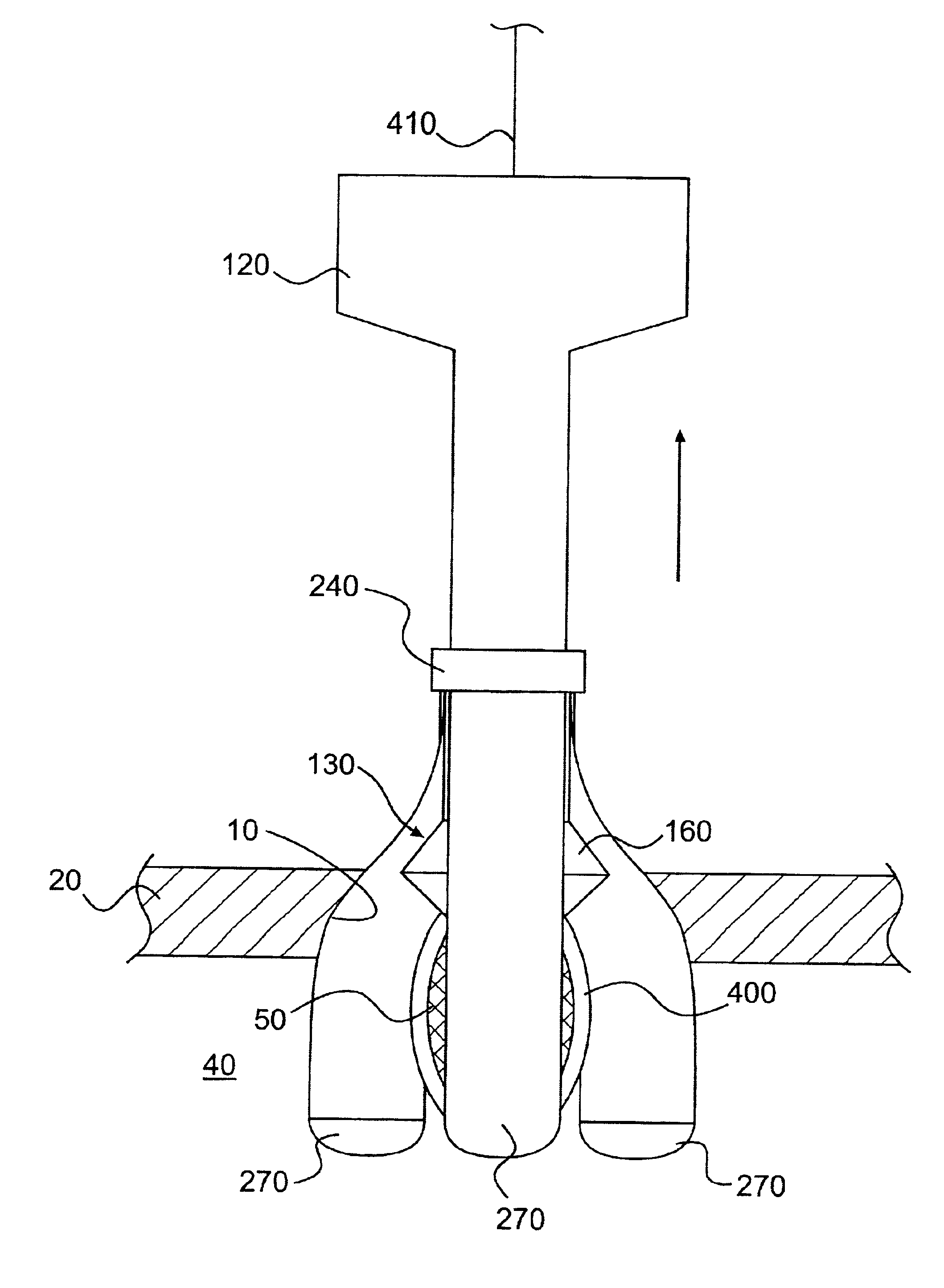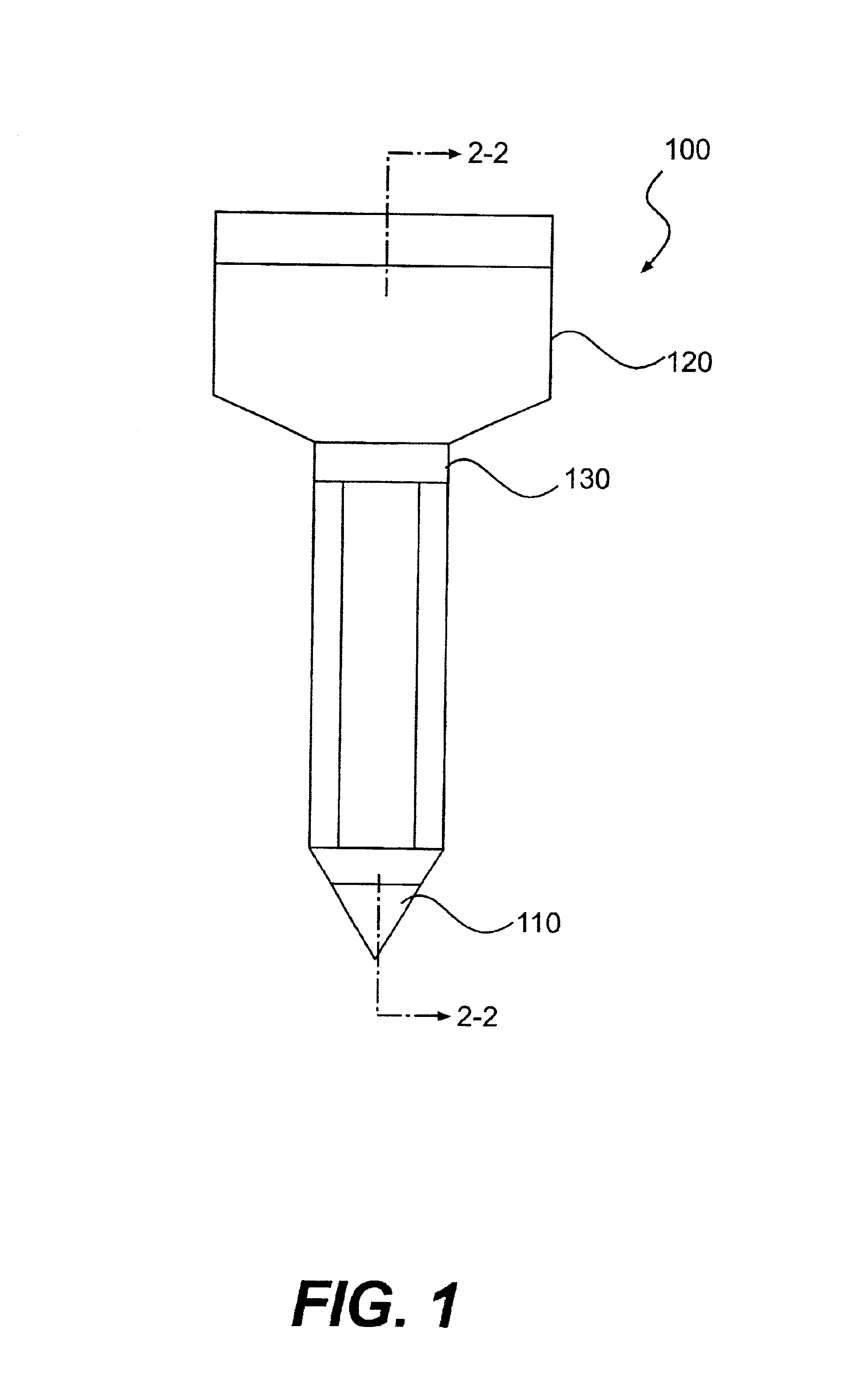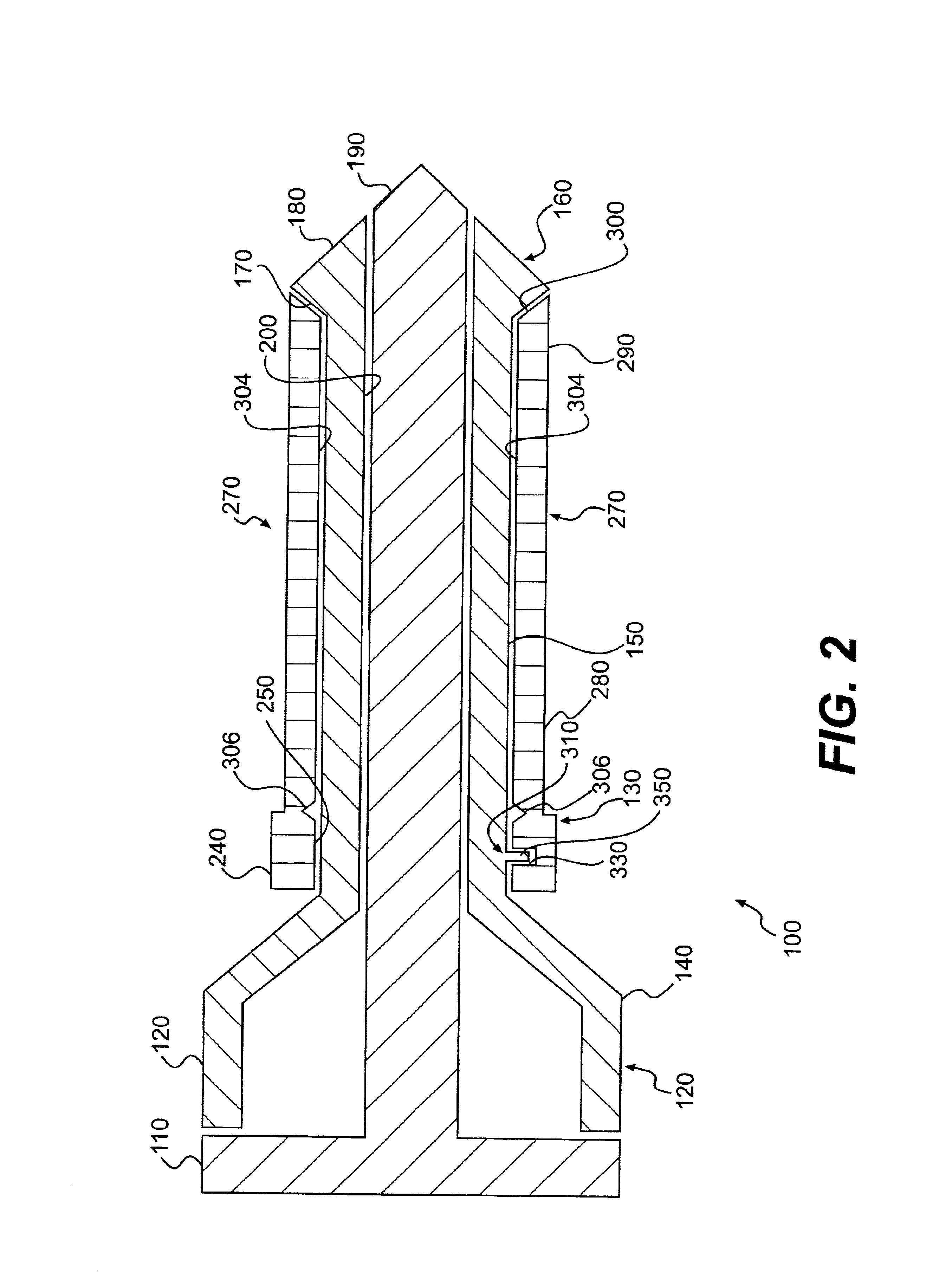Laparoscopic specimen extraction port
a specimen extraction port and laparoscopic technology, applied in the field of laparoscopic specimen extraction ports, can solve the problems of difficult for surgeons to extract specimens b, varied deleterious effects, and impaired specimen visualization, so as to reduce surgery time and post-operative recovery time
- Summary
- Abstract
- Description
- Claims
- Application Information
AI Technical Summary
Benefits of technology
Problems solved by technology
Method used
Image
Examples
Embodiment Construction
[0028]FIG. 1 is a side view of an LSEP 100 according to the present invention. The LSEP 100 includes a pointed trocar 110, a port 120, and a sheath 130. The LSEP 100 has expanded and contracted positions.
[0029]As illustrated in FIGS. 2 and 3, the port 120 is elongated and hollow. A rearward (or proximal) portion 140 of the port 120 is generally funnel-shaped and tapers radially-inwardly toward an intermediate portion 150. A flapper valve (not shown) like the conventional flapper valve 45 illustrated in FIGS. 15 and 16 is preferably disposed in the rearward portion 140 to preserve pneumoperitoneum during surgery when surgical instruments are not inserted through the port 120. The intermediate portion 150 is longitudinally elongated and preferably has a constant cross-section over its longitudinal length. As would be appreciated by one of ordinary skill in the art, however, the intermediate portion 150 need not have a constant cross-section over its longitudinal length. To the contrar...
PUM
 Login to View More
Login to View More Abstract
Description
Claims
Application Information
 Login to View More
Login to View More - R&D
- Intellectual Property
- Life Sciences
- Materials
- Tech Scout
- Unparalleled Data Quality
- Higher Quality Content
- 60% Fewer Hallucinations
Browse by: Latest US Patents, China's latest patents, Technical Efficacy Thesaurus, Application Domain, Technology Topic, Popular Technical Reports.
© 2025 PatSnap. All rights reserved.Legal|Privacy policy|Modern Slavery Act Transparency Statement|Sitemap|About US| Contact US: help@patsnap.com



